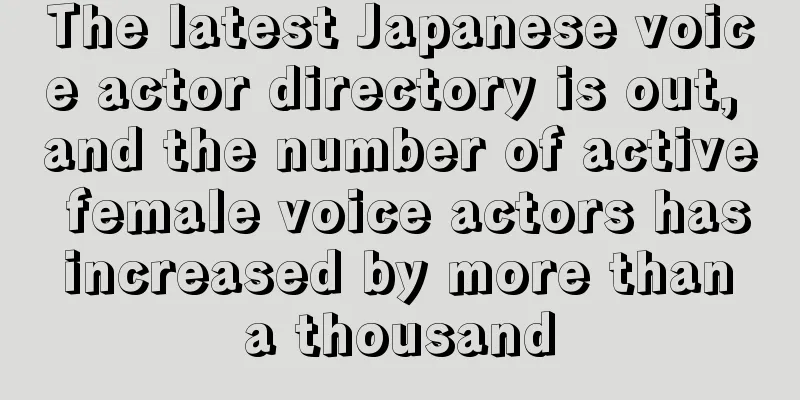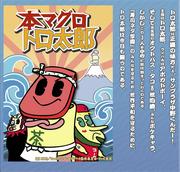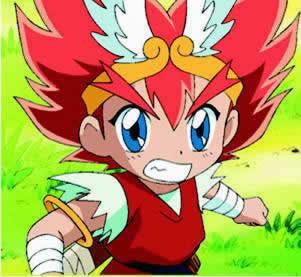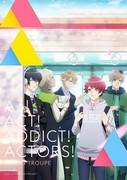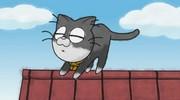Review of "Roku San Shi no Ken": A unique story and deep characters
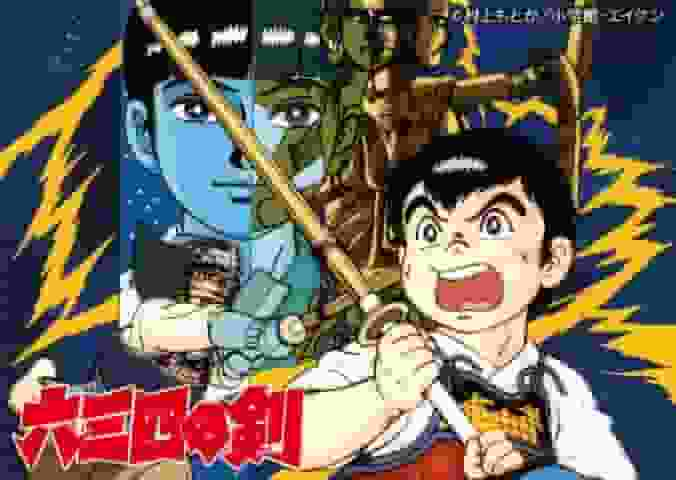
"Rokusanshi no Ken": A story of a boy who pursues the path of kendo"Rokuzou no Ken" is a TV anime series based on the manga of the same name by Murakami Motoka, and was broadcast on TV Tokyo from 1985 to 1986. This work is a moving story about the growth of Natsuki Rokuzou, a boy born into a kendo family, the relationships that surround him, and his passion for kendo. Below, we will introduce detailed information and the appeal of this work. ■ Public MediaTV anime series ■ Original Mediacomics ■ Broadcast periodApril 18, 1985 - September 26, 1986 [Boys' Edition] April 18, 1985 - March 27, 1986 Broadcast every Thursday from 19:00 to 19:30 All 49 episodes [Youth Edition] April 3, 1986 - September 26, 1986 Broadcast every Thursday from 19:30 to 20:00 *Up to episode 13 Broadcast every Friday from 19:00 to 19:30 *From episode 14 onwards All 23 episodes ■Broadcasting stationTV Tokyo affiliates ■Frequencieshalf an hour ■ Number of EpisodesEpisode 72 ■Original StoryMurakami Motoka (Published by Shogakukan) ■ DirectorToshitaka Tsunoda ■ ProductionProduced by TV Tokyo and Eiken Production cooperation: Sunshine Corporation ■Works©Motoka Murakami/Shogakukan Eiken ■ StoryA boy born to the Natsuki couple. He was named "Rokumi-shi" because he was born at 4pm on the 3rd of June. Influenced by his parents who practiced kendo, Rokumi-shi was taught kendo from an early age and his talent blossomed. However, when he was in the first grade of elementary school, his father, Eiichiro, won a kendo tournament but died from injuries sustained during the match. The man who caused this was Toudou Kunihiko, the father of Rokumi-shi's rival, Toudou Shura... ■ExplanationThis series is a faithful anime adaptation of Murakami Motoka's "Rokusanshi no Ken," which was serialized in "Weekly Shonen Sunday" (Shogakukan). The first year's broadcast depicted the protagonist Natsuki Rokusanshi's childhood and elementary school years, in which he single-mindedly devotes himself to kendo in order to become stronger, and the following year, the "youth edition" depicted Rokusanshi's high school years. In order to express the Iwate dialect of Iwate Prefecture, where the story is set, voice actors from Iwate Prefecture provided instruction. ■CastRokuzo Natsuki / Yuriko Fuchizaki (now Yuriko Fuchizaki), Ryo Horikawa (now Ryo Horikawa) ・ Eiichiro Natsuki / Kan Tokumaru ・Kayo Natsuki/Rihoko Yoshida ・Toudou Shura/Kyoko Hamura, Katsumi Toriumi ・Kunihiko Toudou/Noriaki Wakamoto (now Norio Iwamoto) ・Arashiko Todoroki/Kazue Ikura ・Eleventh/Kito Satoko ■ Main staff・Original work: Motoka Murakami (Published by Shogakukan) Director: Toshitaka Tsunoda Character design and general animation director: Makoto Kokubo, Katsutoshi Kobayashi (Youth Edition) ・Series Composition/Yamamoto Yu ・Art director: Moritoshi Endo ・Music by Hidemi Sakashita ■ Main Characters・Natsuki Rokusan A boy born into a kendo family. He was a troublemaker in his childhood. ・ Eiichiro Natsuki Rokuzo's father, a kendo master who works for the Iwate Prefectural Police Mobile Unit. ・Kayo Natsuki She is Rokusan's mother and an elementary school teacher. A heroine nicknamed "Demon Yuri." ・Toudou Shura A kindhearted boy who is a worthy rival of Rokusanji. He is also the son of Toudou Kunihiko. ・Kunihiko Toudou Shura's father and Eiichiro's senior. He has won the All Japan Championship. ・Todoroki Arashiko Childhood friend of Rokusanji. He attended the same elementary, middle, and high school as Rokusanji. Eleventh Rokusan's pet dog. He lost one eye after being attacked by a stray dog. ■ Theme songs and music・OP ・"Barefoot Soldier" Lyrics by Masayuki Ueno ・Composer: Daisuke Inoue Arrangement: Shiro Sagisu ・Singer: Kosuke Shimoyama ・ED ・"Map of Men" Lyrics by Masayuki Ueno ・Composer: Daisuke Inoue Arrangement: Shiro Sagisu ・Singer: Kosuke Shimoyama The appeal and evaluation of "Rokusanshi no Ken"Although "Rokuzou no Ken" is a work with the theme of kendo, it depicts a deep human drama that goes beyond being a simple sports anime. The story centers around the growth of the main character, Rokuzou Natsuki, and the bonds he forms with his family and friends. Below, we will take a closer look at the appeal and evaluation of this work. 1. The protagonist's growth and human dramaNatsuki Rokuzo is a boy born into a kendo family, and is shown devoting himself to kendo from an early age. His growth is not simply a matter of improving his kendo skills, but also of his emotional growth as he overcomes the great challenge of his father's death. In particular, the death of his father leads to a fateful encounter with Toudou Kunihiko, which also affects the relationship between Rokuzou and Toudou Shura. The depth of this human drama leaves a strong impression on viewers. 2. Realistic depiction of kendoIn "Roku San Shi no Ken," the kendo match scenes are depicted very realistically. The author of the original work, Murakami Motoka, is an experienced kendo practitioner, so the tension of the matches and the beauty of the techniques are faithfully reproduced in the anime. In addition, the rules and etiquette of kendo are accurately depicted, making this a very appealing work for viewers who are interested in kendo. 3. Use of Iwate dialectThe story is set in Iwate Prefecture, and the Iwate dialect is used extensively. Voice actors from Iwate Prefecture provided guidance, making it possible to realistically express the dialect and enriching the atmosphere of the work. In particular, the strong character of Mushi's mother, Kayo Natsuki, nicknamed "Demon Yuri," is portrayed using the Iwate dialect, making a strong impression on viewers. 4. The appeal of musicThe opening theme "Hadashi no Soldier" and the ending theme "Otoko-tachi no Chizu" feature Kosuke Shimoyama's powerful singing voice. The opening theme in particular captures the hearts of viewers with its melody that symbolizes Rumi's passion for kendo. Additionally, Hidemi Sakashita's background music is also effective in stirring emotions as the story unfolds. 5. The charm of the charactersMany unique characters appear in "Rokusanshi no Ken." The protagonist, Rokusanshi, is fascinating as he grows from a troublesome childhood into a young man. Each character, including his father Eiichiro, mother Kayo, rival Toudou Shura, and childhood friend Todoroki Ranko, has their own background and feelings, evoking deep empathy from the viewer. In particular, the presence of Rokusanshi's pet dog, Juichi, adds warmth to the story. Recommended points of "Rokusanshi no Ken"Although "Roku San Shi no Ken" is a work with a kendo theme, it is also a deep story that depicts human drama and character growth. Below, we will list specific points that make this work recommended. 1. Recommended for Kendo loversThe work is based on the theme of kendo, and the match scenes are depicted realistically, as well as the rules and etiquette of kendo. It is particularly enjoyable for those who are interested in kendo or who actually practice kendo. Another attractive feature is the human drama depicted through kendo. 2. Recommended for those who like coming-of-age storiesThe story centers on the growth of the main character, Mushiba, and depicts his development from childhood to high school. Viewers are moved by the sight of him overcoming the ordeal of his father's death and deepening his passion for kendo. The story also depicts his relationships with the characters around him in depth, making it a recommended read for those who enjoy stories of growth. 3. Recommended for those who like human dramasWhile "Rokusanshi no Ken" is a work with a kendo theme, it also depicts human dramas such as the bonds between family and friends, fate, and growth. In particular, the fate with Toudou Kunihiko that arises after the death of his father, and the relationship between Rokusanshi and Toudou Shura, deeply move viewers. This is a work that should be watched by anyone who likes human dramas. 4. Recommended for music loversThe opening theme "Hadashi no Soldier" and the ending theme "Otoko-tachi no Chizu" feature Kosuke Shimoyama's powerful singing voice. Hidemi Sakashita's background music also effectively stirs emotions as the story unfolds. This is a work that music lovers will especially enjoy. 5. Recommended for those interested in Iwate PrefectureThe setting of "Roku San Shi no Ken" is Iwate Prefecture, and the Iwate dialect is used extensively. Voice actors from Iwate Prefecture provided guidance, making it possible to realistically express the dialect, further enriching the atmosphere of the work. This is a recommended work for those who are interested in Iwate Prefecture or who want to hear the Iwate dialect. Detailed episode introduction of "Rokusanshi no Ken""Roku Sanshi no Ken" is divided into two parts, the Boyhood Edition and the Youth Edition, and each episode introduces the story and character growth. BoysThe Shonen version was broadcast from April 18, 1985 to March 27, 1986, and consists of 49 episodes. This version depicts the growth of the main character, Rokuzo Natsuki, from his childhood to his elementary school years. The first episode, "The Birth of Rokusanshi," begins with the scene of Rokusanshi's birth and depicts his childhood as a child born into a kendo family. The story depicts how Rokusanshi, who was once a rowdy boy, blossoms into a talented kendo player under the guidance of his father, Eiichiro, and mother, Kayo. In episode 10, "Eiichiro's Death," Rokuzo's father, Eiichiro, wins the kendo tournament, but dies from injuries sustained during the match. This episode has a major impact on Rokuzo's life, and is deeply connected to the development of the story that follows. Episode 20, "Meeting Toudou Shura," depicts Rokuzo's first encounter with Toudou Shura. Shura is Rokuzo's rival and is portrayed as a kind-hearted boy. This episode depicts the moment when the friendship between Rokuzo and Shura begins to blossom. Episode 30, "Fated Showdown," depicts the fate of Rokuzo and Kunihiko Toudou. Kunihiko is the one who caused Eiichiro's death and stands in Rokuzo's way as a major enemy. This episode depicts the moment when Rokuzo's growth and passion for kendo are put to the test. In episode 40, "Mr. Misato's Determination," Ms. Misato reaffirms her passion for kendo and resolves to overcome the death of her father. This episode symbolizes Ms. Misato's growth in spirit and has a major impact on the development of the story thereafter. Episode 49, "The End of the Boyhood Arc," depicts Rokuzo's graduation from elementary school and his progression into junior high school. This episode depicts Rokuzo's growth and the relationships that surround him, leaving viewers in awe. Youth EditionThe Youth Edition aired from April 3, 1986 to September 26, 1986, and consists of 23 episodes. This edition depicts Rokumi's high school years. In the first episode, "A New Start," Rokumi becomes a high school student and devotes himself to kendo in a new environment. This episode depicts Rokumi's growth and the new relationships he encounters. In episode 5, "Reunion with Shura," Rokuzou reunites with Toudou Shura. Shura continues to practice kendo in high school, and the moment his friendship with Rokuzou blossoms again is depicted. This episode gives a deeper look into the relationship between Rokuzou and Shura. Episode 10, "Rekindled Fate," sees the rivalry between Rokuzo and Kunihiko Toudou rekindle. Kunihiko witnesses Rokuzo's growth and challenges him to a showdown once again. This episode tests Rokuzo's passion for kendo and his determination to overcome the death of his father. Episode 15, "Arashiko's Feelings," depicts the feelings of Rokuzo's childhood friend, Arashiko Todoroki. Arashiko keeps her feelings for Rokuzo in her heart, but she supports his passion for kendo. This episode delves into Arashiko's emotional growth and her relationship with Rokuzo. Episode 20, "The Final Battle," depicts the final battle between Rokuzo and Toudou Kunihiko. This episode shows Rokuzo's passion for kendo and his determination to overcome the death of his father being put to the test. The outcome of the final battle leaves viewers deeply moved. Episode 23, "The End of Youth," depicts Rokusan's graduation from high school and his transition to college. This episode depicts Rokusan's growth and the relationships that surround him, leaving viewers in awe. Evaluation and impressions of "Rokusanshi no Ken"Although "Roku San Shi no Ken" is a work with a kendo theme, it is also a deep story that depicts human drama and character growth. Below, I will give a detailed evaluation and review of this work. 1. A realistic depiction of KendoIn "Roku San Shi no Ken," the kendo match scenes are depicted very realistically. As the author of the original work, Murakami Motoka, is an experienced kendo practitioner, the tension of the matches and the beauty of the techniques are faithfully reproduced in the anime. In addition, the rules and etiquette of kendo are accurately depicted, making this a very appealing work for viewers who are interested in kendo. This realistic depiction leaves a strong impression on the viewer. 2. The depth of human dramaAlthough "Rokusanshi no Ken" is a work themed around kendo, it also depicts human drama, such as the bonds between family and friends, fate, and growth. In particular, the fate with Toudou Kunihiko that arises after the death of his father, and the relationship between Rokusanshi and Toudou Shura, leave a deep impression on viewers. Additionally, the strong character of Rokusanshi's mother, Natsuki Kayo, nicknamed "Demon Yuri," also leaves a strong impression on viewers. The depth of this human drama evokes strong empathy in viewers. 3. The appeal of the charactersMany characters with unique personalities appear in "Rokusanshi no Ken." The protagonist, Rokusanshi, is fascinating as he grows from a troublesome childhood into a young man. Each character, including his father Eiichiro, mother Kayo, rival Toudou Shura, and childhood friend Todoroki Ranko, have their own backgrounds and feelings, evoking deep empathy from the viewer. In particular, the presence of Rokusanshi's pet dog, Juichi, adds warmth to the story. The charm of these characters leaves a strong impression on the viewer. 4. The appeal of musicThe opening theme "Hadashi no Soldier" and the ending theme "Otoko-tachi no Chizu" feature Kosuke Shimoyama's powerful singing voice. The opening theme in particular draws viewers in with its melody that symbolizes Rumi's passion for kendo. Additionally, the background music by Hidemi Sakashita is also effective in stirring emotions as the story unfolds. The appeal of this music leaves a strong impression on viewers. 5. Use of Iwate dialectThe story is set in Iwate Prefecture, and the Iwate dialect is used extensively. Voice actors from Iwate Prefecture provided guidance, which made it possible to portray the dialect more realistically, further enriching the atmosphere of the work. In particular, the strong character of Rokumi's mother, Natsuki Kayo, nicknamed "Demon Yuri," is portrayed using the Iwate dialect, making a strong impression on viewers. The use of the Iwate dialect adds to the appeal of the work. Recommended points of "Rokusanshi no Ken"Although "Roku San Shi no Ken" is a work with a kendo theme, it is also a deep story that depicts human drama and character growth. Below, we will list specific points that make this work recommended. 1. Recommended for Kendo loversThe film is based on the theme of kendo, and features realistic depictions of match scenes and accurate depictions of the rules and etiquette of kendo. It is particularly enjoyable for those who are interested in kendo or who actually practice it. Another attraction is the human drama depicted through kendo. This is a film that kendo fans should definitely watch. 2. Recommended for those who like coming-of-age storiesThe story centers on the growth of the main character, Mushiba, and follows him from childhood to high school. Viewers are moved by the way he overcomes the ordeal of his father's death and deepens his passion for kendo. The story also deeply depicts his relationships with the characters around him, and is recommended for those who like coming-of-age stories. This is a work that should be watched by anyone who likes coming-of-age stories. 3. Recommended for those who like human dramasWhile "Rokusanshi no Ken" is a work themed around kendo, it also depicts human dramas such as the bonds between family and friends, fate, and growth. In particular, the fate with Toudou Kunihiko that arises after the death of his father, and the relationship between Rokusanshi and Toudou Shura, deeply move viewers. This is a work that should be watched by anyone who likes human dramas. This is a work that should be watched by anyone who likes human dramas. 4. Recommended for music loversThe opening theme "Hadashi no Soldier" and the ending theme "Otoko-tachi no Chizu" feature the powerful singing voice of Kosuke Shimoyama. Additionally, the background music by Hidemi Sakashita is also effective in stirring emotions as the story unfolds. This is a work that music lovers will especially enjoy. This is a work that music lovers should definitely watch. 5. Recommended for those interested in Iwate Prefecture"Roku San Shi no Ken" is set in Iwate Prefecture, and the Iwate dialect is used extensively. Voice actors from Iwate Prefecture provided guidance, making it possible to realistically express the dialect, further enriching the atmosphere of the work. This work is recommended for those who are interested in Iwate Prefecture or who want to hear the Iwate dialect. This work is a must-see for anyone interested in Iwate Prefecture. ConclusionAlthough "Rokusanshi no Ken" is a work themed around kendo, it is also a deep story that depicts human drama and character growth. The story centers around the growth of the protagonist, Natsuki Rokusanshi, and the bonds he has with his family and friends. This work is recommended for kendo fans, fans of stories of growth, fans of human drama, fans of music, and fans of Iwate Prefecture. Please watch this work and feel Rokusanshi's passion for kendo and his growth. |
<<: GoShogun in: Stranger in Time review: A fusion of time travel and adventure
>>: "Run in the Wind" Review: A fascinating story and character depth
Recommend
L5 game "Million Ton Musashi" adapted animation PV announced mecha battle
Level-5 released the first PV of the anime adapta...
"Captain America" volunteers to play a new role Marvel CEO plans to film Star Wars
Recently, Disney announced that Marvel Studios CE...
Director Quentin plans to sell 7 uncut scenes of "Pulp Fiction" as NFT
Recently, director Quentin Tarantino announced th...
"Resident Evil" movie heroine "John Wick" production company's new action movie
DEADLINE revealed the first stills of the new mov...
The adventure of the shogunate! The classic masterpiece "Blade of the Immortal" is released in a new animation version
Hiroaki Samura's famous manga "Blade of ...
"She-Hulk" reveals new stills, Daredevil appears in a new suit
The Marvel series "She-Hulk" released t...
The aircraft model is released in advance! Tsuburaya's new animation "SSSS" will be broadcast next year
The highly anticipated new animation "SSSS.D...
The new animated film trailer of the famous game "Corner Pets" will be officially released in November
The masterpiece of the super cute healing game se...
Banner of the Stars Special Edition: In-Depth Review and Recommended Points
Starry Sky Special Edition - The Tale of Space Wa...
The 40th anniversary commemorative model of Gundam designed by famous industrial designer Kiyoyuki Okuyama is unveiled
2019 marks the 40th anniversary of the super popu...
New poll shows 1 in 4 Netflix users in the US plans to cancel their subscription this year
The operational difficulties faced by Netflix, th...
Marvel's "Ultraman Rise" comic trailer released with a strong American comic style
The new Ultraman comic story "THE RISE OF UL...
Ellie actor talks about the series "The Last of Us": I respect the original game very much
The series "The Last of Us" has been co...
UQ HOLDER! (16) Limited Edition with DVD Review: Content and bonuses that exceed expectations
UQ HOLDER!(16) Limited Edition with DVD - Detaile...
Family Man is pleased to have Marvel ace Brie Larson join "Fast and Furious 10"
The superhero team "Family" of the &quo...

